Kraków 2018-01-14
VIII Aviation Meeting.
Boeing B-17 G Candie, December 26, 1944.
On January 13, 2018, on the occasion of the 72nd anniversary of the emergency landing of the Boeing B-17 "Candie" bomber at the Kliny estate in Krakow near Fort No. 52, a meeting was held at the Kliny Culture Club at ul. Bishop Albin Małysiak 1.

It was already the 8th meeting in this series. The driving force behind the entire project are the gentlemen: historian Robert Springwald and historian Dr. Krzysztof Wielgus.
The solemn meeting began with the Holy Mass in the Church of Saint Rafał Kalinowski at 18:30. The concelebration was attended by Father Dominik Orczykowski, chaplain of aviators.
During the meeting, Mr. Leszek Wójtowicz - Polish poet, singer, guitarist and composer, belonging to the band of Piwnica pod Baranami in Krakow, gave an author's concert. In the 80-year bard of the underground "Solidarity".
The Boeing B-17 Flying Fortress is an American long-range four-engine heavy bomber, designed and built in the mid-1930s by the Boeing Airplane Company. Almost 13,000 B-17 Flying Fortress machines were built. The planes served in the Allied forces. They were mainly used in raids on Germania. In total, the B-17s dropped over 640,000 tons of bombs on targets in Europe. About 4,750 machines were lost during the Second World War. The resistance of the structure to combat damage and strong defensive armament ensured the B-17 the status of an aviation legend.
Boeing B-17 G Bomber No.Y-44-6337. The plane belonged to the 352nd Squadron 301st Bomber Group of the 5th Bomber Wing of the 15th US Air Force. The crew gave the machine its proper name, "Candie" (candy). On December 26, 1944, on the feast of Saint Stephen, the plane took part in a raid on a chemical plant in Blachownia Śląska, where synthetic petrol was produced. The plane took off from a base in Italy. The machine at the target of the bombing was fired upon and damaged. The airmen decided to fly to the nearest airport occupied by the CCCP army. This has proved to be technically impossible. The plane lost its ceiling and flew over Krakow. From the Kraków-Płaszów station, it was shelled by a Germanic armored train. While looking for a place to land, they were also shot from the POW camp in Borek Fałęcki (area of Zawiła streets), to which the crew responded strongly with fire. The crew made a left circle in the area of the water tower in Skotniki and, following the eastern course, descended to an emergency landing in the direction of Ford No. 52 in Borek Fałęcki. An emergency landing took place without the landing gear extended. Even so, the touchdown was very gentle. The plane stopped near the moat of Fort.
The crew of the Boeing B-17 consisted of 10 soldiers: machine commander Lieutenant Harry Filer, co-pilot Lieutenant Alfred Cryer, navigator Lieutenant Gilbert Nesch, bombardier sergeant William Nassif, radio operator sergeant Earle Cochrane, mechanic sergeant Ernst Anticola, bottom gunner Sergeant Edward Codo, side gunner Sergeant Phillip Shlom, side gunner Sergeant Franklin Elmen, tail gunner Sergeant Patrick Hick.
The airmen were captured by the Germans. One of the crew members was of Jewish origin. Only a very hard intervention by the captain-commander of the machine prevented him from being separated from the rest of the crew and avoided a tragic fate. They all happily survived the war.
The real tracker of the history of Boeing B-17 Candie is Dr. Krzysztof Wielgus, who in the 1980s, together with Mrs. Jadwiga Środulska-Wielgus, wrote the first articles that appeared in the press. The authors of the articles reached Mr. Tadeusz Wroński, who in his book entitled "Chronicle of Occupied Krakow" on December 25, 1944, wrote - "... A British plane forcibly landed in the fields near Kobierzyn. 10 crew members (Canadians) were taken prisoner. " (Tadeusz Wroński - Chronicle of Occupied Krakow. Krakow Literary Publishing, 1974, page 384). At that time (1980s), all data needed to be clarified. Even as to the date, there were doubts, because the witnesses who found themselves even gave the date of December 18, 1944. One thing was certain, it was a Sunday or other holiday, because the faithful were just leaving the church after the Holy Mass, when a large plane flew low over their heads. It quickly became clear that the plane was the American B-17 Flying Fortress. It was guessed that the plane had to take part in the raids on chemical plants in Dwory or Kędzierzyn, which the Allies were doing at that time a lot. It was also learned that the airmen did not want to flee and hide, but waited for the regular Germanic army. Before the occupant arrived, the airmen let numerous children into the plane, who were offered sweets and chocolate. The airmen burned the maps and destroyed the bombing sight. After the arrival of the Germanic soldiers, the airmen were picked up by them, and the plane was disassembled and taken to the Rakowice-Czyżyny airport. The plane was carried on a platform, and its stabilizer was so high that it damaged the tram line in the vicinity of Mateczny (later called Rondo Matecznego).
Jan Sagan, memories in 1985.
One of the first recorded eyewitness accounts was the account of Mr. Jan Sagan, who lived 500 meters from the landing site of the plane. He informed that the plane had landed after 10:00, because they had already returned from the Holy Mass. The weather was clear and the sun was shining brightly. As he walked home, he saw a few silver dots high in the sky. These were planes that flew in formations beyond the range of the enemy's anti-aircraft guns. When Mr. Jan was at home, suddenly he heard a loud roar of engines. The whole family jumped to the window. Through the window, a low-flying giant plane with US hallmarks was seen. The plane was flying from the west, approximately on the line on which it landed. During landing, one propeller fell off the plane, which was located about 200 m from the place where the plane had stopped. The first to reach the plane were the inhabitants of nearby houses. They communicated with the crew in Polish, because there were Poles in the crew. They did not express any desire to hide or fear of captivity. Rather, they enjoyed a happy landing. They presented the arrivals with biscuits and chocolate. They even allowed boarding the plane. The colleagues who were inside told about burning papers and maps. They also saw a demolished instrument panel in the cockpit. First, the Geramń soldiers came from the fort, and then other soldiers from the echelon standing at the Swoszowice station. It was then that a large group of residents was driven away. Then cars came with the Germanic gendarmerie, which took the airmen. One or two airmen were slightly injured. The Germans put up a guard next to the plane, yet many residents took home many souvenirs. Later it was said that the plane flew with two engines, and therefore much lower than the others. It was shelled by anti-aircraft artillery on the so-called Madara (Wola Duchacka), which damaged its third engine. Landing was imperative. The chosen spot was sufficiently large and flat to allow a successful touchdown. Mr. Jan added that the inscription "Candie" was written in unprinted letters, just like proper names in Allied squadrons.
Mr. Jan Sagan
There are also other eyewitness accounts that were collected by the historian Robert Springwald from the Museum of the Home Army under the name of General Fieldorf Nil.
“We are lucky that there are still witnesses to this event among us. One of them, Mr. Tomasz Duśko, donated a bomb loading elevator to the Home Army Museum, which is the only part of the plane that has survived to this day. It was shown to the public for the first time at the meeting (2014). We also thank Mr. Stanisław Pękala, Wiesław Mackiewicz and Stanisław Cinal for the written reports from the landing at the Home Army Museum. " - Mr. historian Robert Springwald.
About the emergency landing of "Candie" was written by Mr. Szymon Serwatka, the author of the book "From the Italian land to the Polish" describing the activities of bomber aviation in the battle for Silesian synthetic gasoline.
Memoir of December 27, 1944, of Mr. K. Tratkiewicz, written in 2014.
69 years have passed since then. I was 8 at the time, lived on Światowida Street and attended the Primary School in Borek Fałęcki. There was a time of German occupation, terrible and hard times. The father, who was a senior commander in the 8th Lancers Regiment of Prince Józef Poniatowski and set out for the September campaign in 1939, from the barracks in Kobierzyn, after returning home, died in January 1940. The mother looked after her two daughters, she did not work. The only breadwinner was my Aunt who worked in the "Solvay" Soda Factory.
On that day, unexpectedly in the morning hours, during working hours, my aunt came to the house. She excitedly said, "Halina, get dressed quickly, I found out at work that yesterday a huge plane landed in Kobierzyn, I want to show it to you!" As a child, I did not think about the fact that there is no airport in the immediate vicinity. But as Auntie says, there's probably something there. We were walking fast, because there was not much snow, the ground was frozen. But it was about 2.5 km to walk. Apart from the buildings of Stalag, we took shortcuts through wastelands, meadows, almost without buildings.
What I remember is an enormous fuselage in my mind with large wings and partial damage. It was impossible to approach the plane because it was fenced off and the German army stood by it. I was impressed by the transparent cabin which seemed to me to be very high but I could see some devices and clocks. We did not stand by this plane for long, there were more onlookers like us and my aunt had to go back to work. We learned from someone that the pilots were taken by the Germans and that yesterday the pilots offered chocolate or sweets.
For such a long period of time there were no memories of this event that many details fell out of my mind. Only when my husband, a few years ago, mentioned that he was going to meet him in Podgórze, because there was to be a trip there and a story about the history of the Liberator plane which crashed in Płaszów in 1944, I remembered this story. Since then, I have been interested in every publication, especially in Dziennik Polski, and I am compiling excerpts from these newspapers. I was delighted to see the annual Candie B-17 landing event on January 4, 2014, and was able to attend.
Mr. K. Tratkiewicz
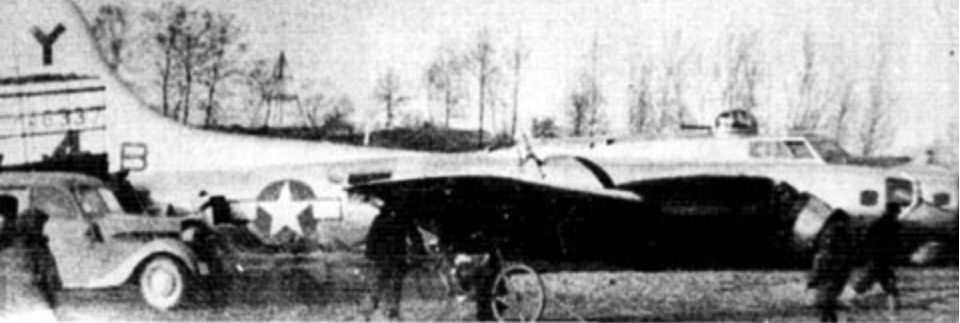
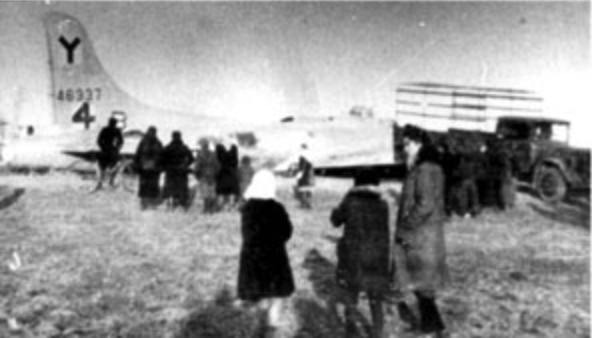
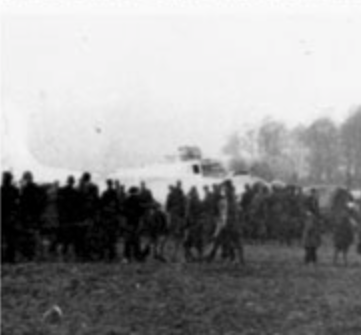
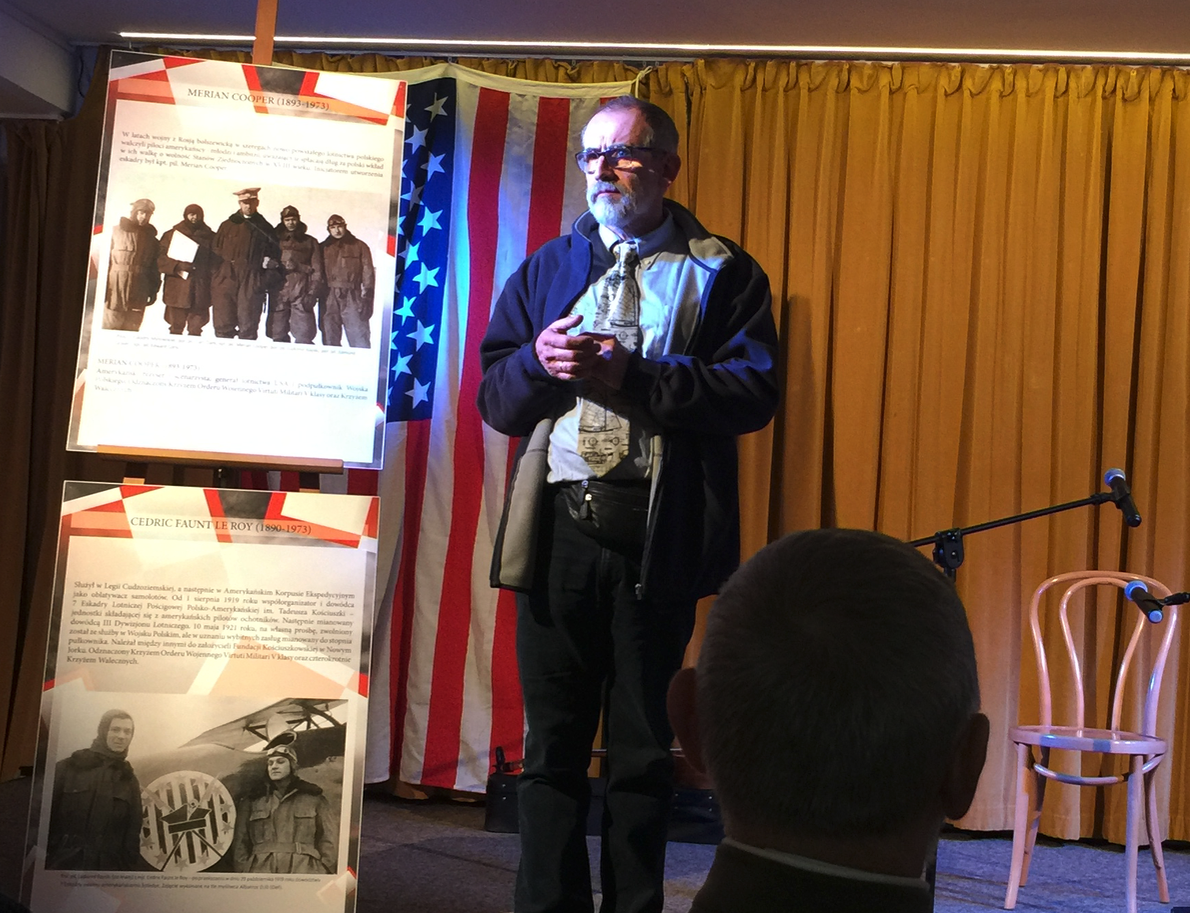
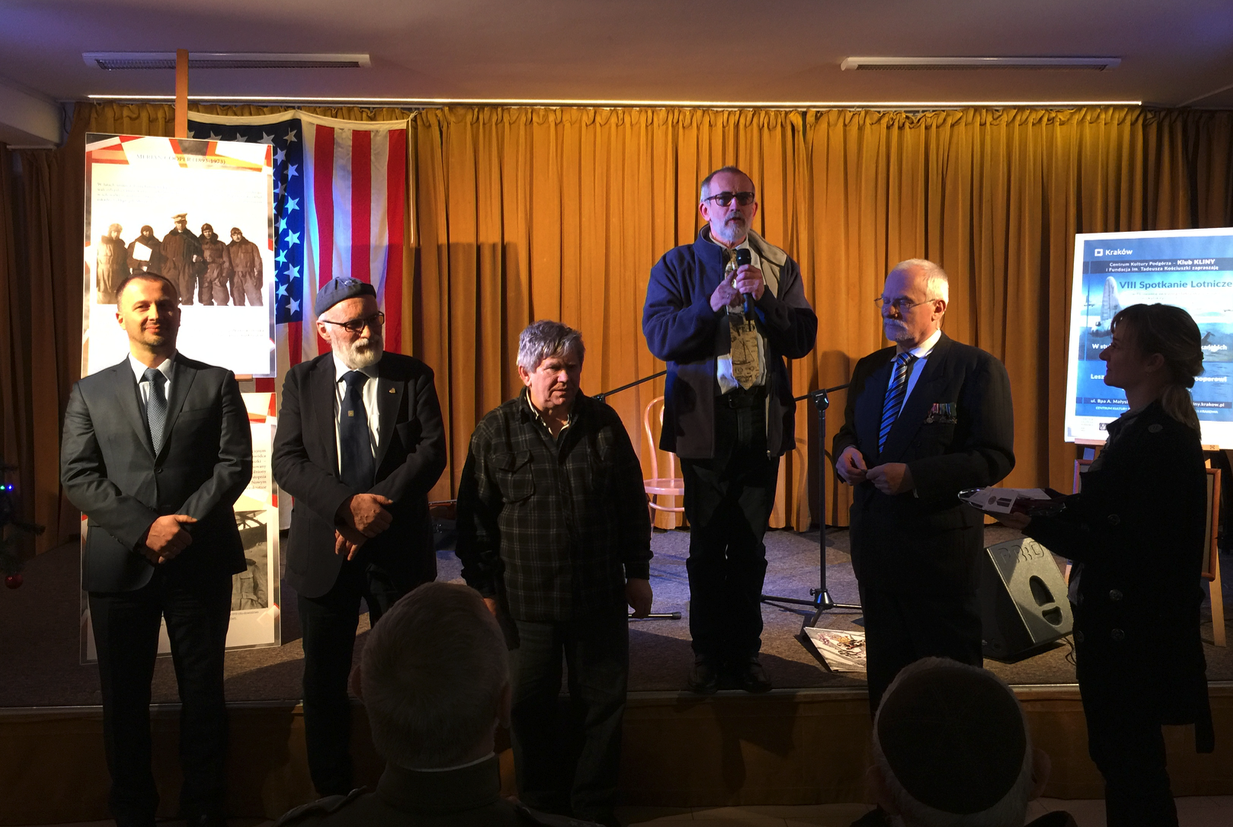
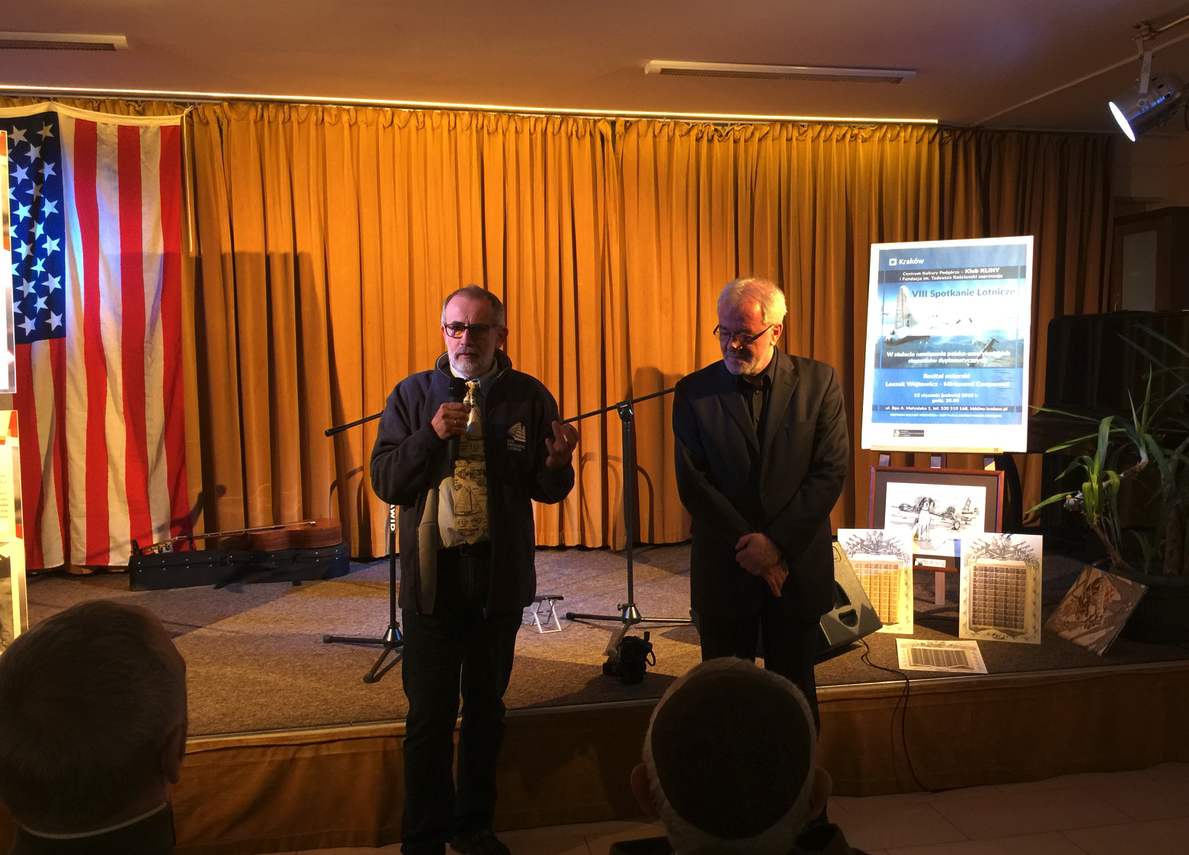
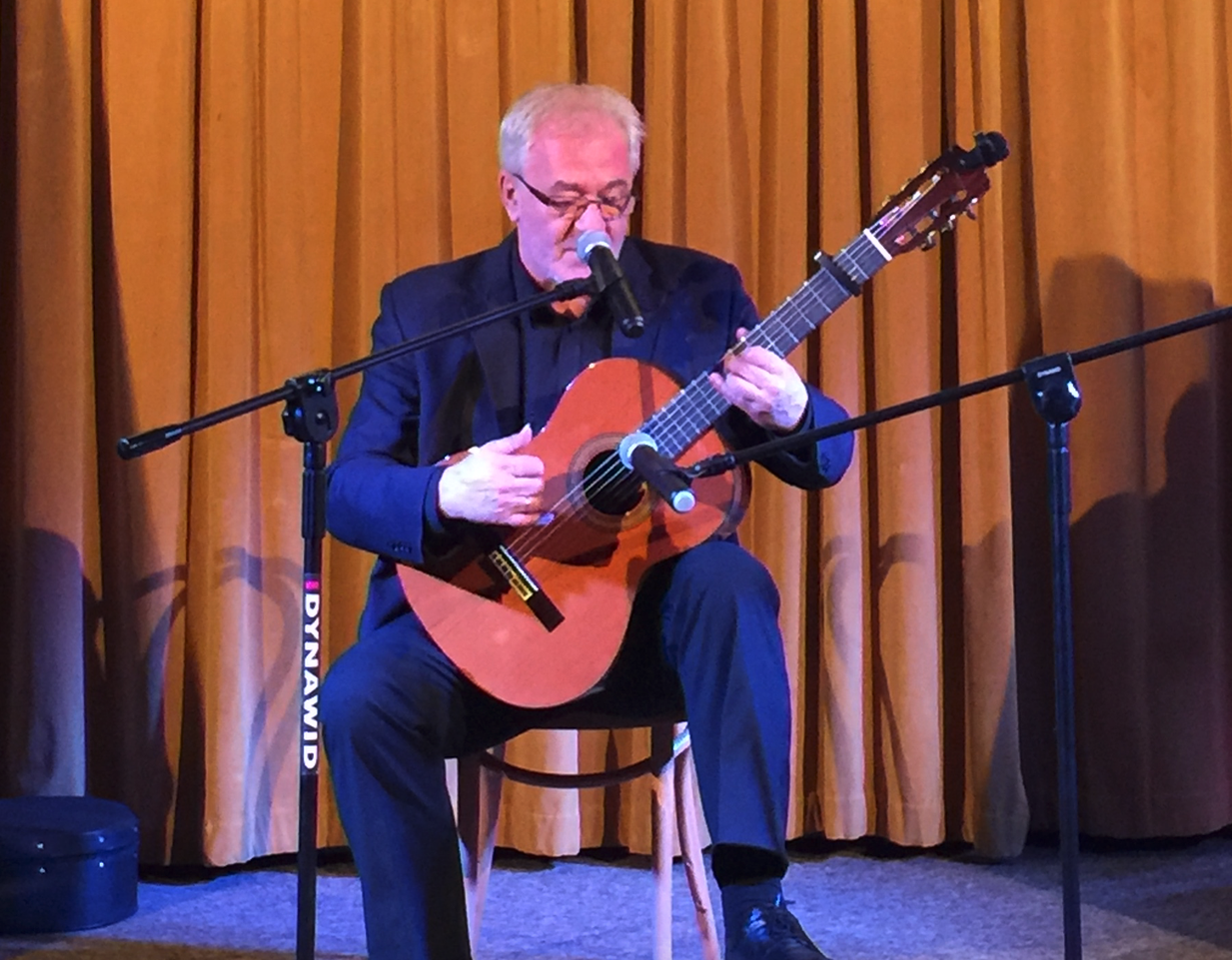

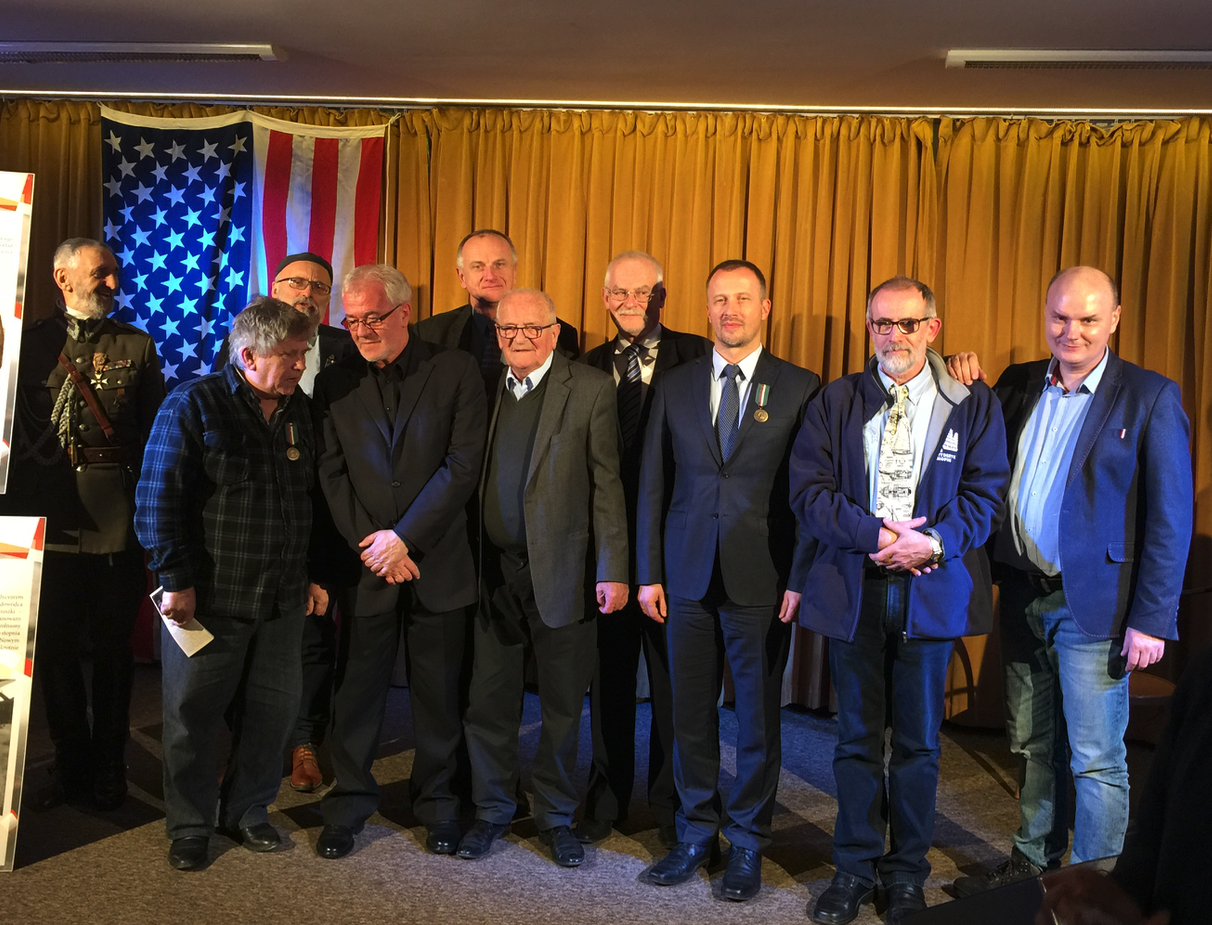
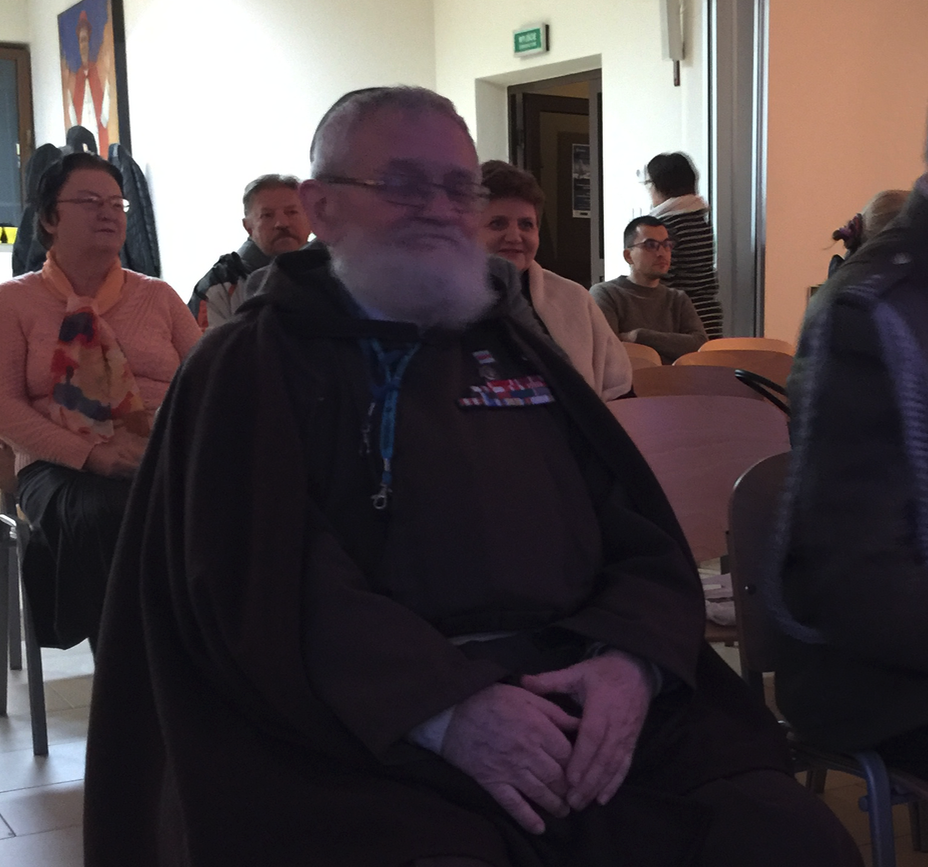
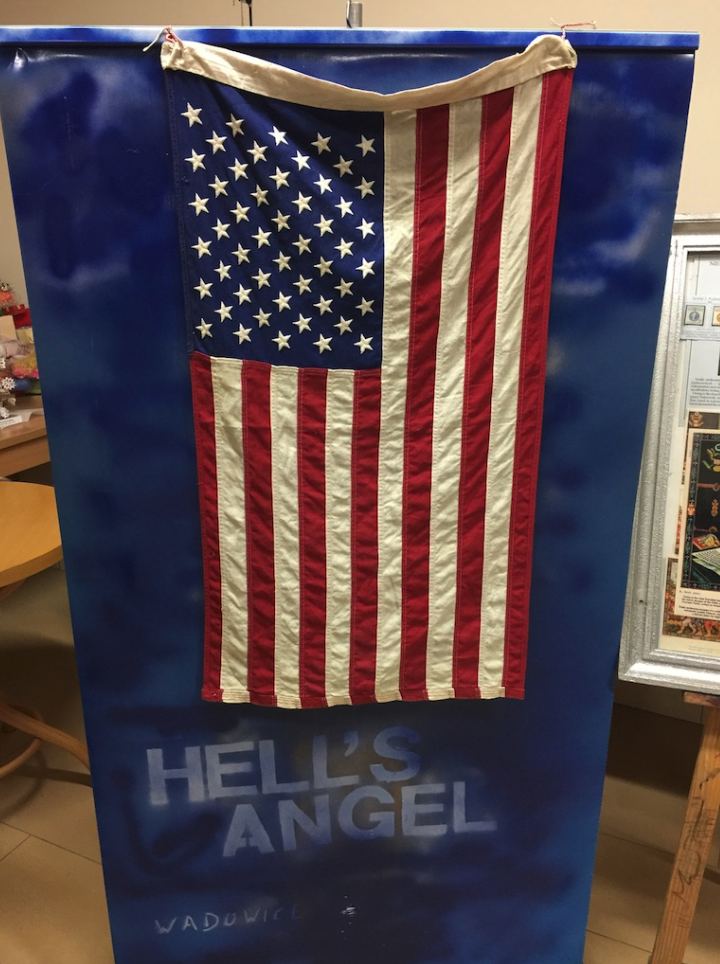
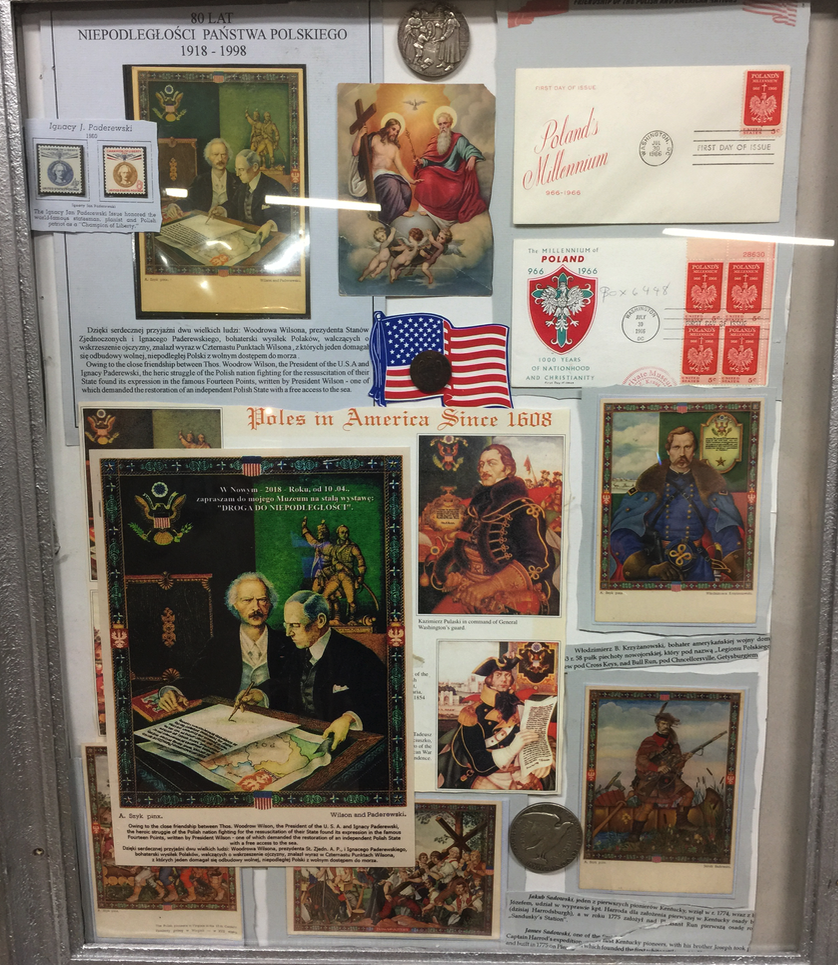
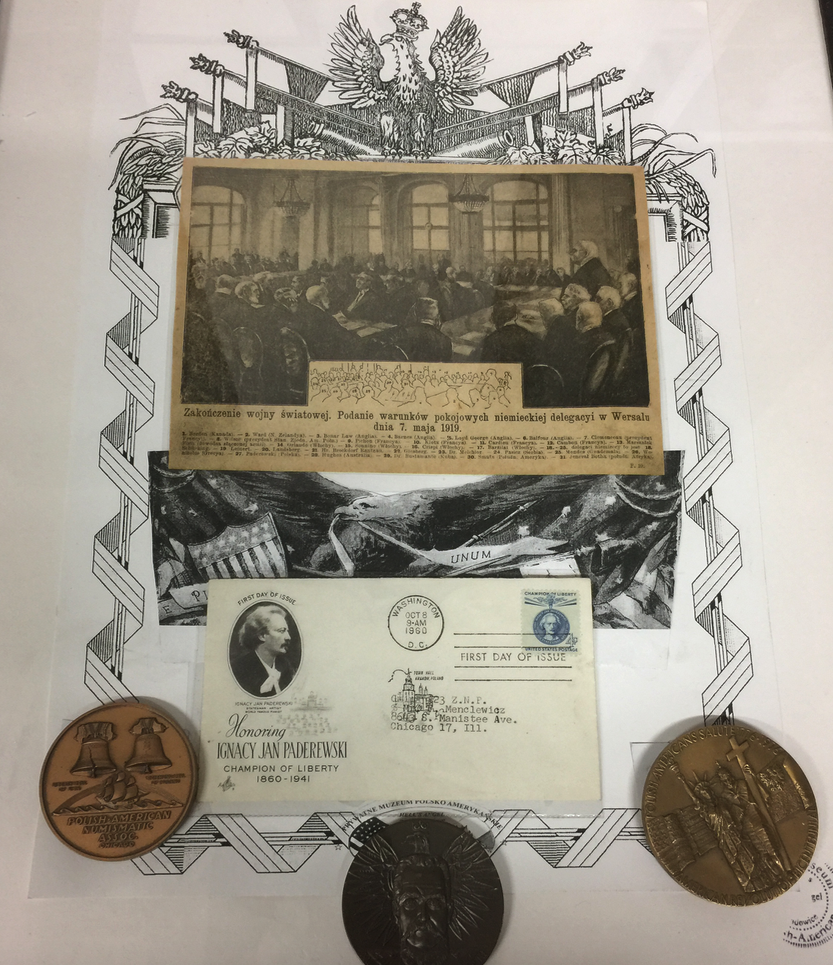
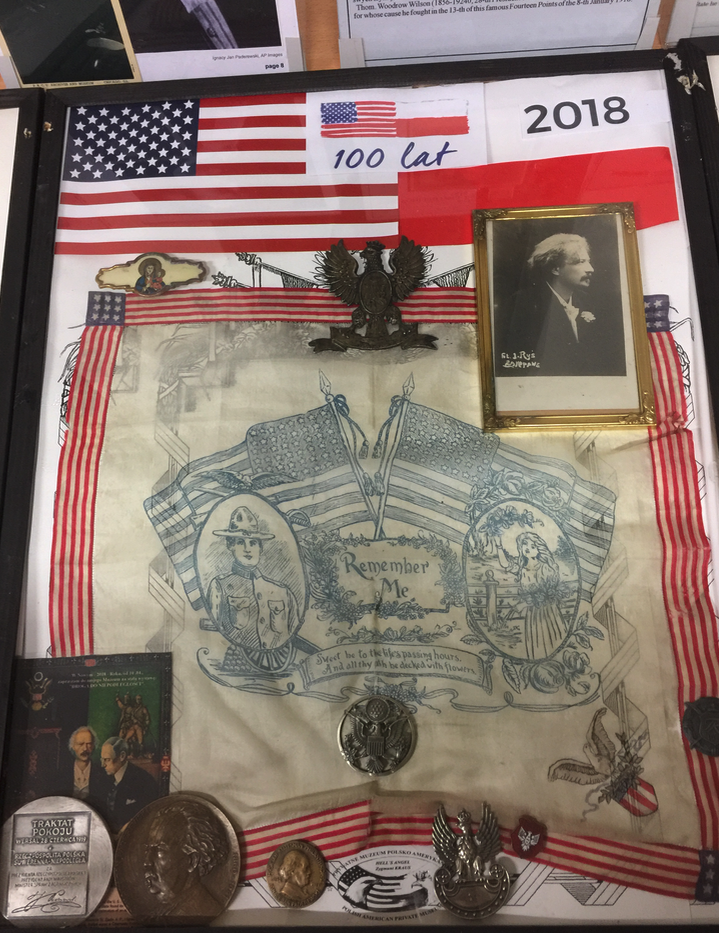
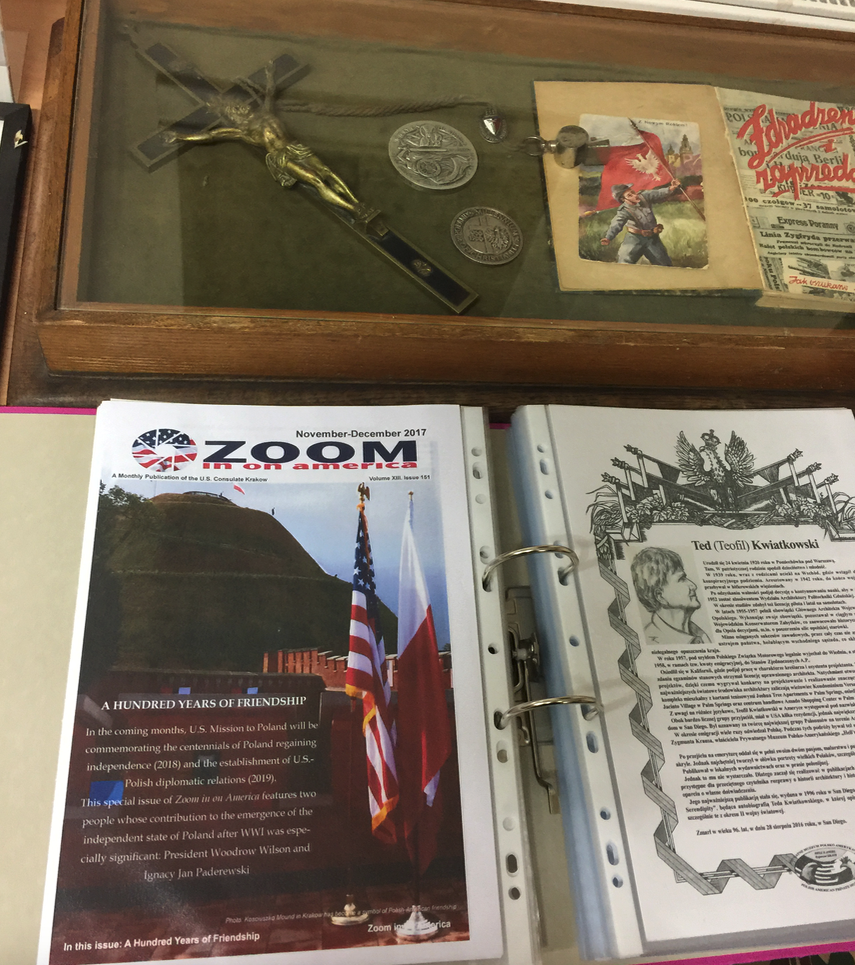
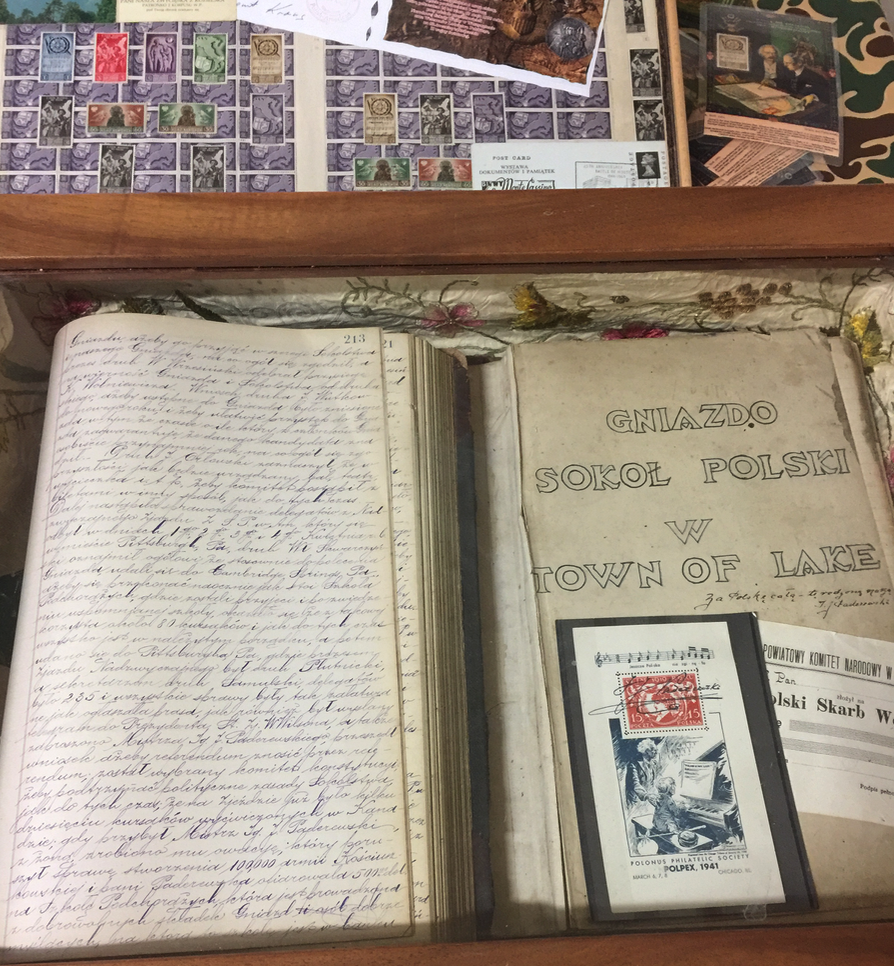
Written by Karol Placha Hetman
